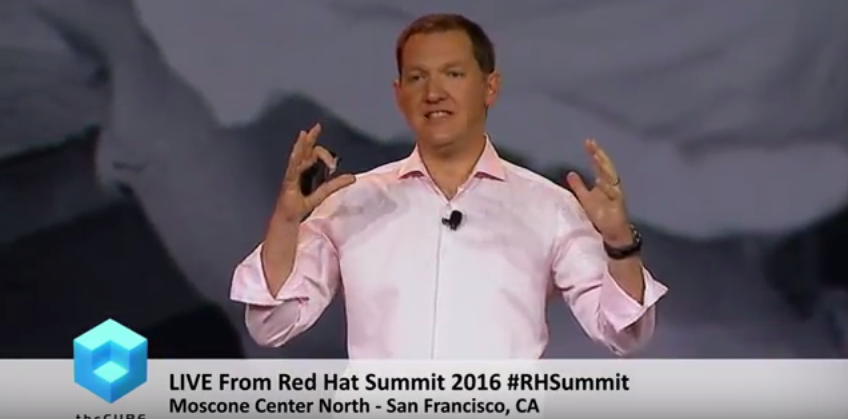 NEWS
NEWS
 NEWS
NEWS
 NEWS
NEWS
Red Hat Summit kicked off today at the Moscone North in San Francisco with a keynote that began with an orchestral ensemble playing on stage. The theme of the summit was “the power of participation,” and the orchestra was chosen to illustrate that theme. The session’s keynote speakers talked about open-source collaboration and the way individual actors synthesize to form a whole — much the way musicians produce music.
The introductory speakers, Thomas Cameron, senior principal cloud evangelist at Red Hat, Inc., and Sharmey Shah, global account manager at Red Hat, kicked off the keynote. Shah told the audience, “Because open source is now at the forefront of every major breakthrough in technology, the future of open source belongs to those who show up and participate. And that’s you.”
She also spoke about Red Hat’s Innovation Awards, which honor 10 year’s of Red Hat’s most innovative and inventive customers. She urged attendees to check out the six nominees and cast their votes.
Red Hat president and CEO, Jim Whitehurst, took the stage next to talk to the audience about Red Hat’s open-source philosophy, where the company has been, and where it’s heading.
He extended the orchestra theme and spoke about a composer who once described an orchestra as a series of stories coming together. “I hope you feel that here this week. This is about participation,” he said.
Whitehurst spoke about the curious relationship between computing advances and productivity.
“There really is a paradox around all of this incredible technology that’s happening, yet we continue to see declining levels of productivity,” he said. In his view this is “due to the fact that those technologies are becoming so complex that how we apply them to solve major problems is something that no individual or individual company can do on their own.”
Whitehurst described himself as a history buff and enthusiastically launched into a narrative about the several industrial revolutions we’ve seen. He said that at the last World Economic Forum in Davos-Klosters, Switzerland, there was a lot of talk about how we are now entering the fourth great industrial revolution.
He explained that this new industrial revolution mirrors that second industrial revolution of the late 1800s in certain ways. Although this revolution appears to be quite different on the surface — digital and compute based — it is similar in its underlying principals and in the effects it will produce.
He said that the second industrial revolution was one of mass manufacturing enabled by things like the electric light and electric motor. The result of this growth in manufacturing was for the size of manufacturing companies to grow exponentially in the number of people they employed and the amount of goods and services they produced. So there was a significant coalescing of workers and technologies to create a boom in production.
“It was similar to what we’re seeing now in the sense that there was a set of technologies that came together that allowed for a significant change in how we work,” Whitehurst said.
Whitehurst then quoted a composer who said: “The worst damage I could do is give my orchestra clear instructions.” He said that the ensemble playing off each other spontaneously was the key to successful music making and went on to explain how this idea resonates in open source. “Hierarchies squelch innovation; they don’t foster it,” he said.
He then told a story about how Red Hat came up with the slogan for its mission statement. At first it referred to itself as a leader. But since the company is really on a mission to foster rather than dictate, it decided that term was inaccurate. Then the word was changed to “participant,” but that was too passive to describe what Red Hat does.
Finally, someone came up with the word “catalyst,” and since then, Red Hat has seen it as the perfect way to describe the sparking and fanning that Red Hat does for innovation within its company and across the open-source community.
The final speaker was Elwin Loomis, senior director of the Store of the Future at Target Corp. He said that big companies are getting a wakeup call. Technology has lowered the barriers to entry for so many professions that disruption looms around the corner for just about all businesses.
“If companies don’t start acting agile,” he said, “they will fail,” and they will need the doers and makers, not just figurehead “leaders” to survive.
Watch the full interview below, and be sure to check out more of SiliconANGLE and theCUBE’s coverage of the Red Hat Summit.
THANK YOU